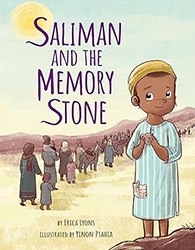The southeastern corner of Jerusalem’s walled Old City known as The Esplanade is one of the most controversial pieces of real estate on the planet, continuing to arouse passions among Jews, Christians, and Moslems as it has for centuries.
Now the editors of this ambitious volume are presenting these jointly converging and conflicting points of view with the personal views of Menachem Magidor, President of Hebrew University, Sari Nusseibeh, President of Al-Quds University, and Carlo Maria Cardinal Martini at the École Biblique et Archéologique, Jerusalem. The editors, further taking pains not to stir up unnecessary controversies or buttress any ideological positions, allowed each to use his preferred name for this disputed historical site, be it The Temple Mount or al-Haram al Sharif.
The thematic chapters — “The Haram al Sharif As a Work of Art,” “The Temple Mount in Jewish Thought,” “Christian Memories and Visions of Jerusalem in Jewish and Islamic Context” — all give substance to the varied perceptions that form the subtext in the differing religious strands.
In the Epilogue the author reminds us that historic monuments do not remain static. They are living spaces that undergo transformations, some through natural intervention some man induced and brutal. The editors explain that no one term can indefinitely delineate the “space,” as there can only be a succession “of attitudes, shapes, myths, symbols and practices from the web of history.” “Yet something may well have defined it as an invention as a sanctuary at the time of the Hebrew monarchy…From then, until now it was a space in which earthbound man fought or sought to find the divine.” This is why, they explain, they have entitled this richly annotated, well-conceived volume Where Heaven and Earth Meet. Drawings and photos, glossary, timeline.





